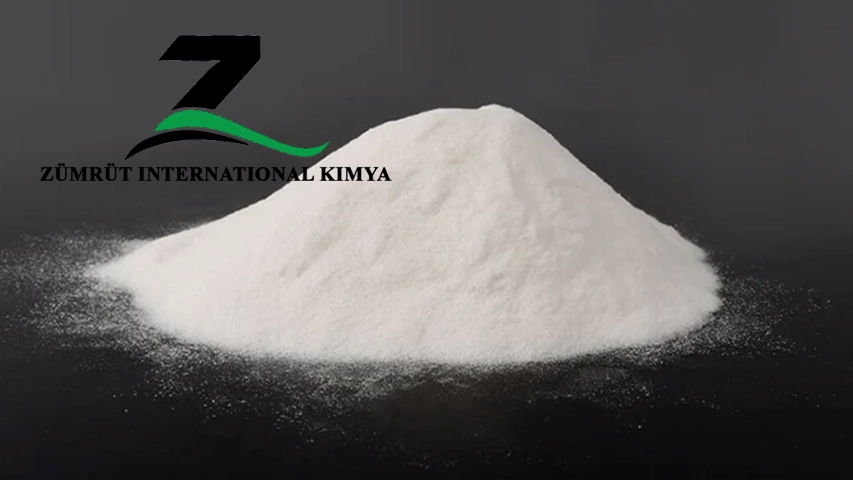Supplier of Soda Ash Light from Turkey and Dubai-UAE

Introduction to Soda Ash Light
Soda Ash Light (sodium carbonate, Na₂CO₃) is a foundational industrial chemical with unparalleled versatility. As a high-purity, fast-dissolving alkali, it powers processes in glass manufacturing, detergents, water treatment, and food production. This guide unpacks its properties, grades, applications, and best practices for safe handling, equipping businesses to optimize their benefits.
What is Soda Ash Light?
Soda Ash Light, or anhydrous sodium carbonate, is a fine, white powder distinguished by its low density (0.7 g/cm³) and rapid solubility. Unlike dense soda ash, its lightweight structure enables quick dispersion in water, making it ideal for pH adjustment, chemical synthesis, and industrial processes requiring fast reactivity.
Key Industries Relying on Soda Ash Light:
-
Glass production
-
Detergent manufacturing
-
Water treatment systems
-
Textile processing
-
Food & pharmaceuticals
Physical & Chemical Properties of Soda Ash Light
| Property | Description |
|---|---|
| Chemical Formula | Na₂CO₃ |
| Appearance | Fine, white, odorless powder |
| Density | 0.7 g/cm³ (lower than dense soda ash) |
| Solubility | 22 g/100 mL water (20°C) |
| pH (106 g/L) | ~12 (highly alkaline) |
| Melting Point | Decomposes at 851°C |
| Safety | Non-toxic, non-flammable; requires PPE for handling |
Industrial Grades of Soda Ash Light
Technical Grade
-
-
Uses: Glass manufacturing, detergents, metallurgy.
-
Benefits: Reduces silica melting points by 300°C, cutting energy costs.
-
Food Grade (E500)
-
-
Certification: Complies with FDA/EFSA standards.
-
Applications: Leavening agent in baked goods, pH stabilizer in beverages.
-
Pharmaceutical Grade
-
-
Purity: >99.9% for antacids, lab reagents, and medical formulations.
-
Detergent Grade
-
-
Function: Enhances surfactant efficiency, softens water in laundry powders.
-
Specialty Grades
-
-
Custom Solutions: Tailored for textiles, ceramics, and electronics.
-
Top Applications of Soda Ash Light
1. Glass Manufacturing
Sodium Carbonate Light lowers silica’s melting temperature (from 2,300°C to 1,500°C), enabling energy-efficient production of:
-
Container glass (bottles, jars)
-
Flat glass (windows, mirrors)
-
Fiberglass (insulation, composites)
2. Water Treatment
-
Neutralizes acidic water (pH 6–8.5 range).
-
Prevents pipe corrosion via calcium carbonate precipitation.
3. Detergent Production
-
Softens hard water by binding calcium/magnesium ions.
-
Boosts stain removal in laundry and dishwashing powders.
4. Textile Processing
-
Removes waxes/oils during fabric scouring.
-
Enhances dye absorption in cotton mercerization.
5. Food & Beverage Industry
-
Bakery: Leavening agent for pretzels, cookies.
-
Beverages: pH regulator in soft drinks and bottled water.
How is Soda Ash Light Produced?
-
Brine Purification: Natural saltwater or mined brine is filtered.
-
Ammoniation: Ammonia gas is introduced to form sodium bicarbonate.
-
Carbonation: CO₂ injection converts bicarbonate to sodium carbonate.
-
Calcination: Heating dense soda ash removes moisture, yielding the light-grade powder.
Safety & Handling Guidelines
-
PPE Requirements: Wear nitrile gloves, goggles, and N95 masks in dusty environments.
-
Storage: Store in sealed, moisture-proof containers at <30°C.
-
Spill Management: Use damp cloths or vacuums to avoid airborne dust.
-
First Aid: Rinse eyes/skin with water for 15 minutes if exposed.
Packaging Solutions
-
25–50 kg Bags: Polypropylene bags with inner liners for moisture protection.
-
Bulk Shipments: 1-ton jumbo bags (FIBCs) for cost-effective logistics.
Conclusion
Soda Ash Light is a cornerstone of modern industry, driving efficiency in glass, detergents, and water treatment. By understanding its grades, applications, and safety protocols, businesses can maximize operational performance while adhering to regulatory standards.
TECHNICAL DATA SHEET OF LIGHT SODA ASH
| CHEMICAL COMPOSITION | UNIT | Min | Max |
|---|---|---|---|
| Sodium Carbonate(Na2Co3) | %wt | 99.2 | 99.6 |
| Sodium Chloride(NaCl) | %wt | 0.5 | 0.7 |
| Sodium Bicarbonate(NaHCo3) | %wt | – | 0.1 |
| Sodium Solfate(Na2So4) | %wt | – | 0.05 |
| Iron(Fe) | ppm | – | 50 |
| Loss on heating | %wt | – | 0.2 |
| Moisture | %wt | – | 0.2 |
| Ni | ppm | – | 30 |
| Cr | ppm | – | 10 |
| Mn | ppm | – | 10 |
| Cu | ppm | – | 30 |
| Characteristics | |||
| Total Alkalinity | %wt | ||
| Pouring Density | g/cm3 | 0.45 | 0.6 |
| Property | Description |
|---|---|
| Chemical Formula | Na₂CO₃ |
| Appearance | Fine, white, odorless powder |
| Density | 0.7 g/cm³ (lower than dense soda ash) |
| Solubility | 22 g/100 mL water (20°C) |
| pH (106 g/L) | ~12 (highly alkaline) |
| Melting Point | Decomposes at 851°C |
| Safety | Non-toxic, non-flammable; requires PPE for handling |

